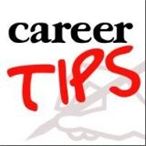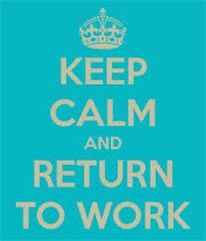Thinking about Changing Careers? Here’s How to Get Started
If you’re considering a career change, it is going to be crucial that you undergo some “internal exercises” to find what sort of career could be best for you. At Ventuready LLC we give assessments and exercises which are very powerful. With the guidance of a talented career consultant, these exercises can generate a higher level of clarity, focus and direction.
Changing careers is really a big decision, so it’s a good idea to pursue this kind of deliberate, logical process – rather than just jumping impulsively in one career to another. It might take some time and effort on your part, but you have to say to yourself “I AM WORTH IT”.
From these exercises and assessments, you can begin to remove the “pipe dreams” and concentrate on the career paths and work environments that suit best along with your strengths, preferences and experiences.
Like, if you usually wanted to become a fighter pilot, but you’ve spent the past 20 years being an accountant, then being an economic executive for an important airline headquartered in your city will make more sense than climbing right into a cockpit.
Sit down and write-out a listing of possible careers or jobs which are a sensible fit in what you’ve learned all about yourself. Then brainstorm some related options, perhaps with the aid of a member of family, good friend or counselor. Make certain the careers you list are ones that you’re feeling genuinely attracted to.
Get “market feedback” from former colleagues, associates and professionals who already understand both your skills and certain requirements of one’s targeted industry.
Researching Careers, Job Categories and Titles
The next phase is to analyze what’s necessary to enter that field. There are numerous great resources you should use to learn about career paths and job roles. These generally include:
- Library research
- Online databases
- Dictionary of Holland Occupational Codes
- Occupational Outlook Handbook (US Department of Labor)
- Career coaches
- Professional associations
- Trade publications
- Universities
- Career portals and “job board” the web sites
Once you’ve completed your research, if all signs point toward an excellent fit, then mobilize your resources, enter into action and pursue your career!
Narrowing Your Choices
If you’re still having trouble finding your career path, go through the info that emerged from your own exercises, assessments and research again. Then, pursue these additional steps:
- Identify the “Consistent Themes” that appeared multiple times in your documents and test reports – themes that appear to “define who you are” (think of those as your “must haves”)
- Create an “Employer Wish List” that features all of the characteristics of a great company to benefit (when picking your following employer, ensure it matches your “ideal adjectives” as closely as possible)
- Draft your “Perfect Job Description” that could truly function as the “job of one’s dreams” (when you‘re “crystal clear” about the particular job you need, you’ll have far better potential for actually finding or creating it)
More detail about these additional exercises is below.
Consistent Themes
Once you completed all of your exploratory career exercises, you undoubtedly noticed some “Consistent Themes” emerging from your own work. Examine all of your answers, and begin to spot the words and phrases which will be mentioned several times.
Discover the adjectives that appear during your writing, and make a listing of them. It’s also possible to find such “consistent themes” in your performance reviews from previous employers. What stands-out? What’s repeated over and over? What seems most critical for you? They are called your “Consistent Themes,” and you have to make note of these! They define who you are and that what you really would like professionally!
You will discover these “Consistent Themes” are vital to your career satisfaction. To the extent possible, therefore, they must be treated as “must haves,” as opposed to “nice to haves.” These “Consistent Themes” will in truth point you directly toward the next career, and provide you with a standard against which to measure future opportunities.
Employer Wish List
The time has come to create an “Employer Wish List” of adjectives that describe your ideal employer, regarding criteria such as for example size, location, industry, product or service, culture, values, environment, people, etc.
Don’t hold back! That is YOUR fantasy, so list what you would really LOVE in your brand-new career and the next company you work for. What kinds of careers typically feature the criteria in your “Wish List?” If you do not know what you would like most in an employer, how can you know when you’ve found the correct one? Or, as the TV personality “Dr. Phil” is partial to saying: “You’ve got to call it to claim it!”
Perfect Job Description
Now it’s time for you to draft your personal “Perfect Job Description.” Here’s your big opportunity to finally design the work you’ve always wanted. Be bold! Use your imagination! Do some research, surf the internet, go throughout your old employment files, talk to some human resource experts. Do what you may have to do to be able to create what you should truly call a “Perfect Job” for you personally at this time in your career. When drafting your “Perfect Job Description,” include these sections: Title, Brief Description of Company, Responsibilities of Job, and Qualifications/Requirements for Candidate, Reporting Relationships, Full Compensation, and Career Path at Company. Again, consider – what kinds of careers have jobs like the main one you’ve just designed for this exercise? Once you obtain clear on all of this, you can have discovered your brand-new career!
There’s something very powerful about knowing exactly what you would like and “pursuing it” with absolute focus and intentionality. The “Perfect Job Description” is a workout that will provide you with that kind of clarity.
Where To Go From Here
Career change is never easy. It’s like finding your way out of a wilderness. In his excellent book, Transitions, William Bridges discusses the challenges of navigating through what he calls “the neutral zone.” The procedure can be hugely difficult and even disorienting. But imagine just how much harder it could be with no “roadmap” that will be produced by completing the exercises outlined above.
Given that you’ve done all of this great work to find your brand-new career path, you’ll need to set the next pieces into place. This calls for developing all of the documents in your “Job Seeker’s Tool Kit” and then planning your full search campaign – including networking, interviewing and negotiating.
The good thing is that you do not have to accomplish it alone or rely 100% on yourself. There are lots of good career articles, books, those sites, support organizations and career advisors to assist you across the journey!


